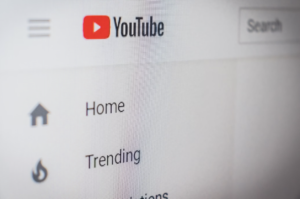Have you considered using YouTube PreRoll ads in your marketing strategy? These ads, which act like a short commercial before a YouTube video begins or sometimes later in the video, can be a powerful way to get your message out to just the right audience.
How Effective Are YouTube PreRoll Ads?
 In short, really effective. YouTube viewership grows constantly. Just check out these statistics.
In short, really effective. YouTube viewership grows constantly. Just check out these statistics.
- YouTube is the second most popular social media platform. (See Oberlo.)
- Two billion logged-in monthly users. (See Hootsuite.)
- One billion hours of video consumed everyday. (See socialsprout.)
- Average user consumes 12 minutes and 43 seconds. (See SocialMediaToday.)
And here’s what makes it really awesome. YouTube is owned by Google. So to harness your pre-roll ads, you will use Google Adwords. This means that you can use keywords related to what you’re selling, what your target audience is looking for, to drive the use of your YouTube Pre-Roll ad. For instance:
- If you sell children’s books, you can play an ad in front of a book reading or book review.
- If you want moms to see your ads, you can play in front of a tutorial for moms.
- If the perfect video for you to be in front of is a make-up tutorial, you can use target keywords to connect with those types of videos.
As you can see, targeting your video to your exact audience is key. And is the great thing about YouTube pre-roll ads. The more specific you can be, the more certain you can be that the right person is going to see your little ad at just the right time.
The Best Way to Use Pre-Roll Ads
According to this fantastic article from Convince & Convert, the best way to use your YouTube pre-roll ad is not to hit your viewers immediately with a sale. Keep in mind, your video is interrupting them. They clicked a YouTube video link to watch that YouTube video and first they have to sit through 5 seconds (and hopefully more) of your video first. So instead, the best way to use this opportunity is to “raise awareness,” according to the article above.
I totally agree. This is your chance to make your viewer go “wow!” or “huh, I never thought of that” or “Well, I’ve never heard of that before.” It’s a chance to make them think, make them informed or educated, and make them click to learn more.
Get creative. Get silly or serious; just make sure to match the tone of your message. Sometimes thinking outside the box is the best way to go.
With YouTube Pre-Roll Ads, You Have 5 Seconds
 The power of a YouTube pre-roll is that it plays before a YouTube video that the viewer has chosen to watch — or sometimes they play midroll or even after. The viewer has to sit through 5 seconds of the pre-roll ad before they can choose to click the “Skip” button and get on with the video they have chosen to watch.
The power of a YouTube pre-roll is that it plays before a YouTube video that the viewer has chosen to watch — or sometimes they play midroll or even after. The viewer has to sit through 5 seconds of the pre-roll ad before they can choose to click the “Skip” button and get on with the video they have chosen to watch.
Those first 5 seconds are the critical moments. Your video can be up to two minutes long, but most people choose to make them shorter, between 15 and 25 seconds in total, according to this article from WordStream. Of course, the whole video should be engaging, entertaining, informative, and generally just well done. But it’s those first 5 seconds that really matter, because those are the seconds that every viewer will see. They can’t skip until those 5 seconds are up.
So what are you going to do with them? That 5 seconds may not sound very long, but take a moment and count them out. “One Mississippi, Two Mississippi, Three Mississippi…” You can do a lot in those 5 seconds. Cut out all the fluff, so to speak, and get to the heart of the matter pretty quickly.
Remember, as we talked about above. This is about awareness. This is the top of your sales and marketing funnel. This is about drawing people in. This is making people aware of your brand, your cause, or your message. Maybe they’ve never heard of you. Maybe they didn’t know you existed, yet. Maybe they need your product or service, but didn’t even know you were an option. Or maybe you do things better than the competition, if only people know you existed. Or maybe there’s a problem out there that they haven’t even heard about, and can make a difference if they only knew.
That’s what these 5 seconds are about. The chance to make them aware.
What Should Your CTA For A Pre-Roll Ad Be?
As you are preparing your pre-roll strategy, you need to think about what you want people to do. What will define success and how will you track it?
A click-through is a great way to keep track of how well your video is going. You can set up a landing page to send people to — to learn more about your brand or to grab a freebie in exchange for an email address. If you have a really engaging storyline, or other attention-grabber, you can encourage people to click-through to watch the rest of a story.
Remember that since this is the top of your sales funnel, about raising awareness, you may not want to use this ad to drive sales directly and immediately. Bring them to a page to build interest and help them learn more.
Some Great Pre-Roll Ad Examples
Do you need some inspiration for your YouTube pre-roll ads? These might spark some ideas:
- Top 10 High Converting YouTube Pre-Roll Ads from YourCharisma
- 11 Best YouTube Pre-Roll Videos from Fiverr
- 13 Amazing YouTube Pre-Roll Ads from HubSpot
Hiring a Voice Over Actor For Your YouTube PreRoll Ads
 When it comes to those 5 seconds that you’ve got to really connect with someone in a YouTube pre-roll ad, you don’t want to take any chances. Hiring a voice over talent can ensure that you hit the right tone in the most professional way. You can’t afford a mumbling voice or inarticulate diction. You need to nail it.
When it comes to those 5 seconds that you’ve got to really connect with someone in a YouTube pre-roll ad, you don’t want to take any chances. Hiring a voice over talent can ensure that you hit the right tone in the most professional way. You can’t afford a mumbling voice or inarticulate diction. You need to nail it.
Furthermore, a voice talent can bring just the right sound to your video. For me, that can often be a snarky millennial or conversational mom. Give your video the sound it needs — and grab them quickly.
So whether you decide to be quirky or serious, just remember that the Pre-roll ad can be a highly effective, and unique way to draw in your audience and make customers interested in your brand and product.
 Sonic branding is a topic that is rather trendy right now in advertising and marketing, with the growing popularity of digital marketing and online videos. But even as those spaces continue to grow, sonic branding isn’t necessarily a new concept. It’s been with us for a while, whether we realize it or not.
Sonic branding is a topic that is rather trendy right now in advertising and marketing, with the growing popularity of digital marketing and online videos. But even as those spaces continue to grow, sonic branding isn’t necessarily a new concept. It’s been with us for a while, whether we realize it or not.  Examples of Sonic Branding That Have Been Around For A While
Examples of Sonic Branding That Have Been Around For A While Creating Your Sonic Branding
Creating Your Sonic Branding Referral marketing is often thrown into lists of great marketing ideas, but have you taken the time to explore how to set up a referral program for your business?
Referral marketing is often thrown into lists of great marketing ideas, but have you taken the time to explore how to set up a referral program for your business? 
 How do you ask? Just ask. Ask your longest or most loyal clients. Ask them upfront “Would you be willing to share my name?”
How do you ask? Just ask. Ask your longest or most loyal clients. Ask them upfront “Would you be willing to share my name?” The single biggest thing you need to make sure to center in your website building is readability. Fonts and fun colors are awesome, but many people find certain color combinations or font choices difficult to read. Sometimes these choices are even headache inducing, especially for older folks. People who have vision correction can also find funky colors and fonts a challenge also. Be sure that you source people on different computers, using different browsers, on mobile and whatever other types you can think of to make sure that everything displays correctly and is easy to follow.
The single biggest thing you need to make sure to center in your website building is readability. Fonts and fun colors are awesome, but many people find certain color combinations or font choices difficult to read. Sometimes these choices are even headache inducing, especially for older folks. People who have vision correction can also find funky colors and fonts a challenge also. Be sure that you source people on different computers, using different browsers, on mobile and whatever other types you can think of to make sure that everything displays correctly and is easy to follow.  Most talent have several different demos relating to the various genres of voiceover that they pursue. There are lots of options for players that can integrate with your site to allow the viewing of several of these demos at once. Ranking should be based on what your most hired genre is, or the one that you want to pursue the most. You should also make sure that the highest ranked ones are the professionally produced cuts. Sometimes if you know what you’re doing, you can get away with making a demo for elearning or audiobooks, since those genres are dryer and don’t need music. But you want to make sure your best foot is forward.
Most talent have several different demos relating to the various genres of voiceover that they pursue. There are lots of options for players that can integrate with your site to allow the viewing of several of these demos at once. Ranking should be based on what your most hired genre is, or the one that you want to pursue the most. You should also make sure that the highest ranked ones are the professionally produced cuts. Sometimes if you know what you’re doing, you can get away with making a demo for elearning or audiobooks, since those genres are dryer and don’t need music. But you want to make sure your best foot is forward.  You’d think this would be a given, but there are sites out there where it’s nearly impossible to find out how to contact a particular talent. Don’t hide your contact info at the bottom of the page in faint text, get that info out there loud and proud! If you’re not comfortable with your home or cell number being visible online, there are many services like Google Voice that allow you to create an easy free forwarding number. And it’s no challenge these days to create a forwarding email if you want to give yourself a step removed from any spam you might get. Contact info for your agents can be useful here too if you typically book work through them. Avoid contact forms unless you have a particular need for them, since they seem really impersonal, and you are making your potential client jump through another hoop to reach you.
You’d think this would be a given, but there are sites out there where it’s nearly impossible to find out how to contact a particular talent. Don’t hide your contact info at the bottom of the page in faint text, get that info out there loud and proud! If you’re not comfortable with your home or cell number being visible online, there are many services like Google Voice that allow you to create an easy free forwarding number. And it’s no challenge these days to create a forwarding email if you want to give yourself a step removed from any spam you might get. Contact info for your agents can be useful here too if you typically book work through them. Avoid contact forms unless you have a particular need for them, since they seem really impersonal, and you are making your potential client jump through another hoop to reach you.
 What does your
What does your 
 At the end of the day, why does this exercise even matter for your brand? Values matter because in many ways, they are the driving force of your brand. They keep you on track when things grow complicated or seem muddled. They help you stay at the helm of your organization and steer with confidence in the direction you are trying to go.
At the end of the day, why does this exercise even matter for your brand? Values matter because in many ways, they are the driving force of your brand. They keep you on track when things grow complicated or seem muddled. They help you stay at the helm of your organization and steer with confidence in the direction you are trying to go.  Does your company need to use a millennial mom for marketing and advertising campaigns? That may depend on what you’re selling, of course, but for a vast variety of products and services, the answer is “yes”.
Does your company need to use a millennial mom for marketing and advertising campaigns? That may depend on what you’re selling, of course, but for a vast variety of products and services, the answer is “yes”.  What Are Millennial Moms Buying?
What Are Millennial Moms Buying?